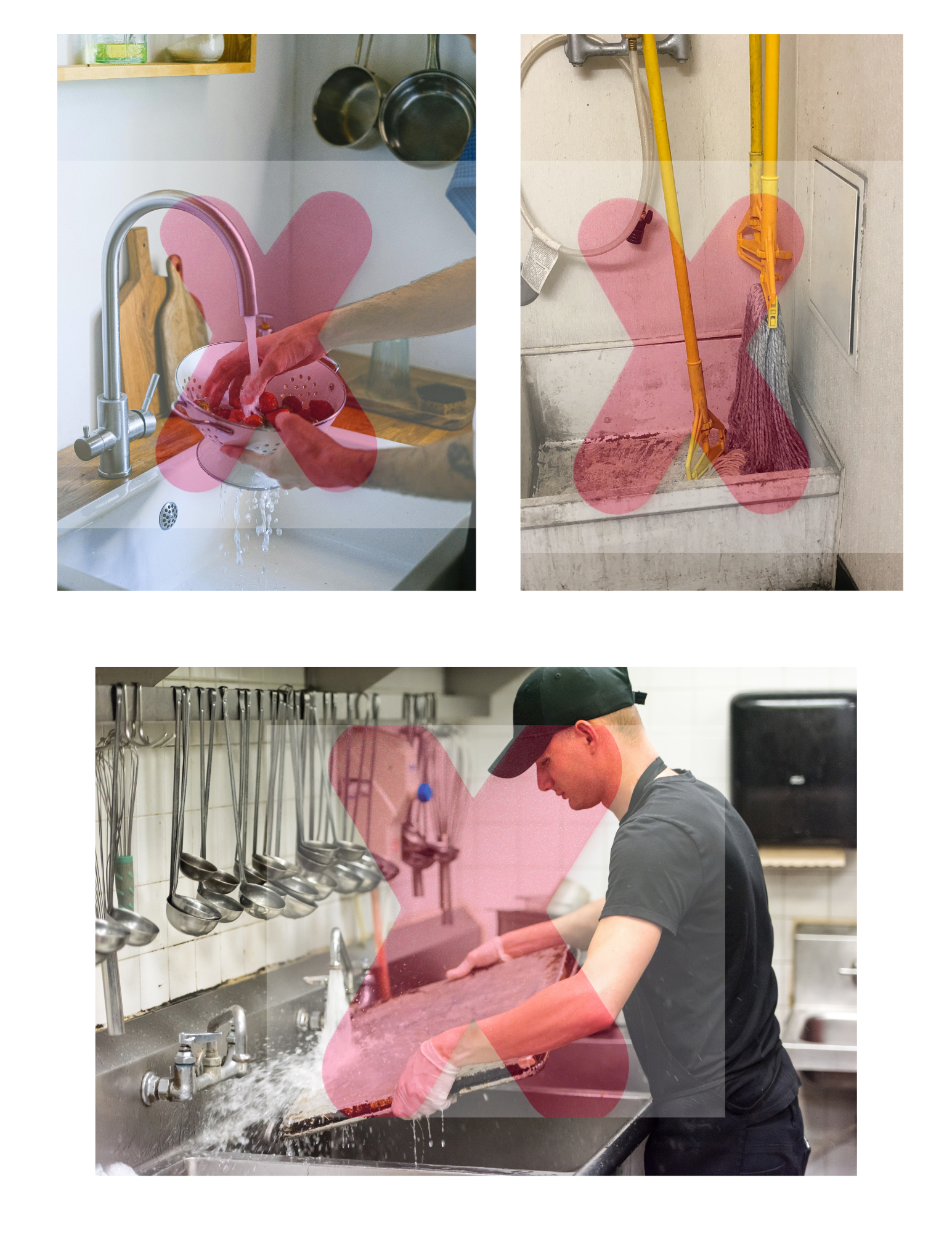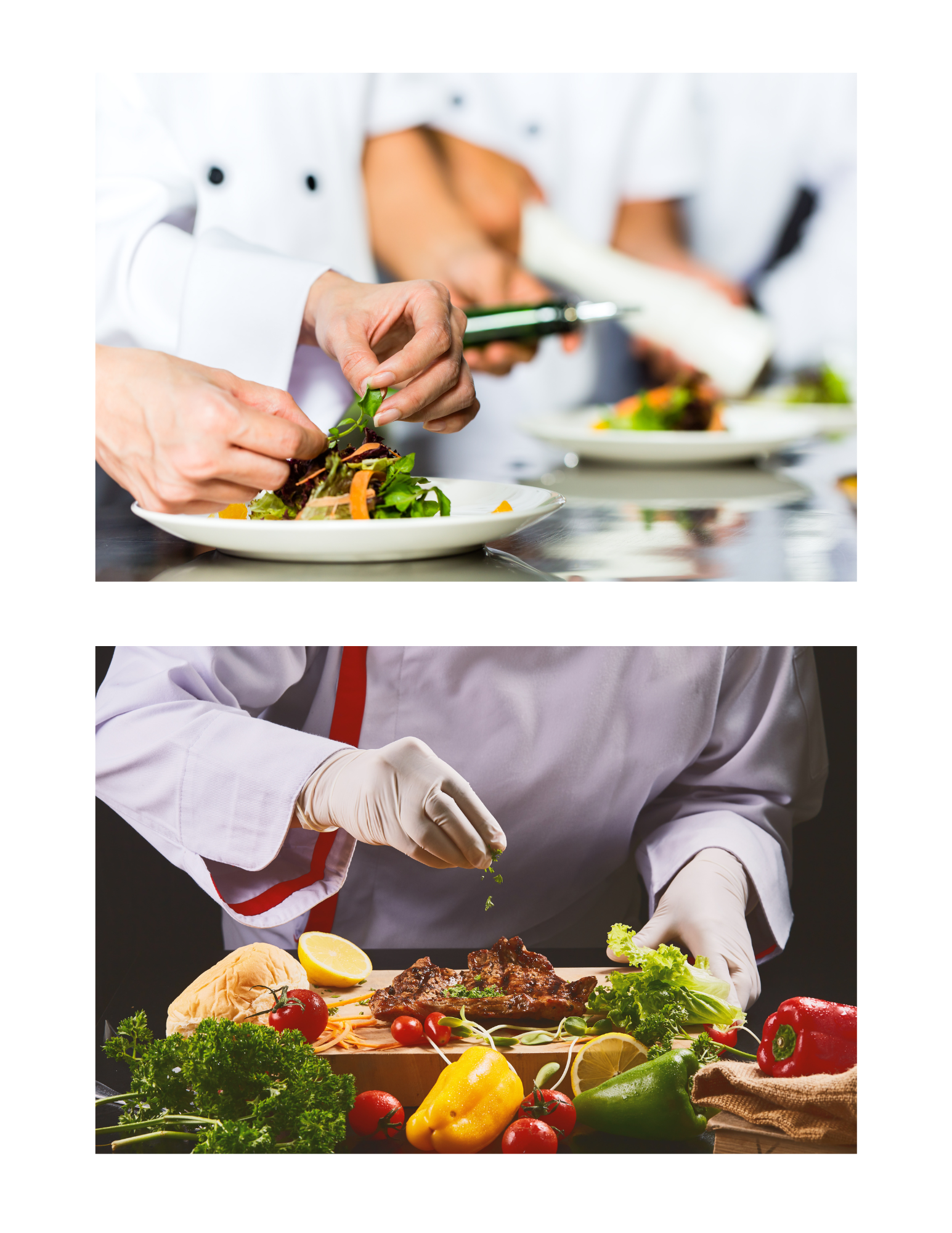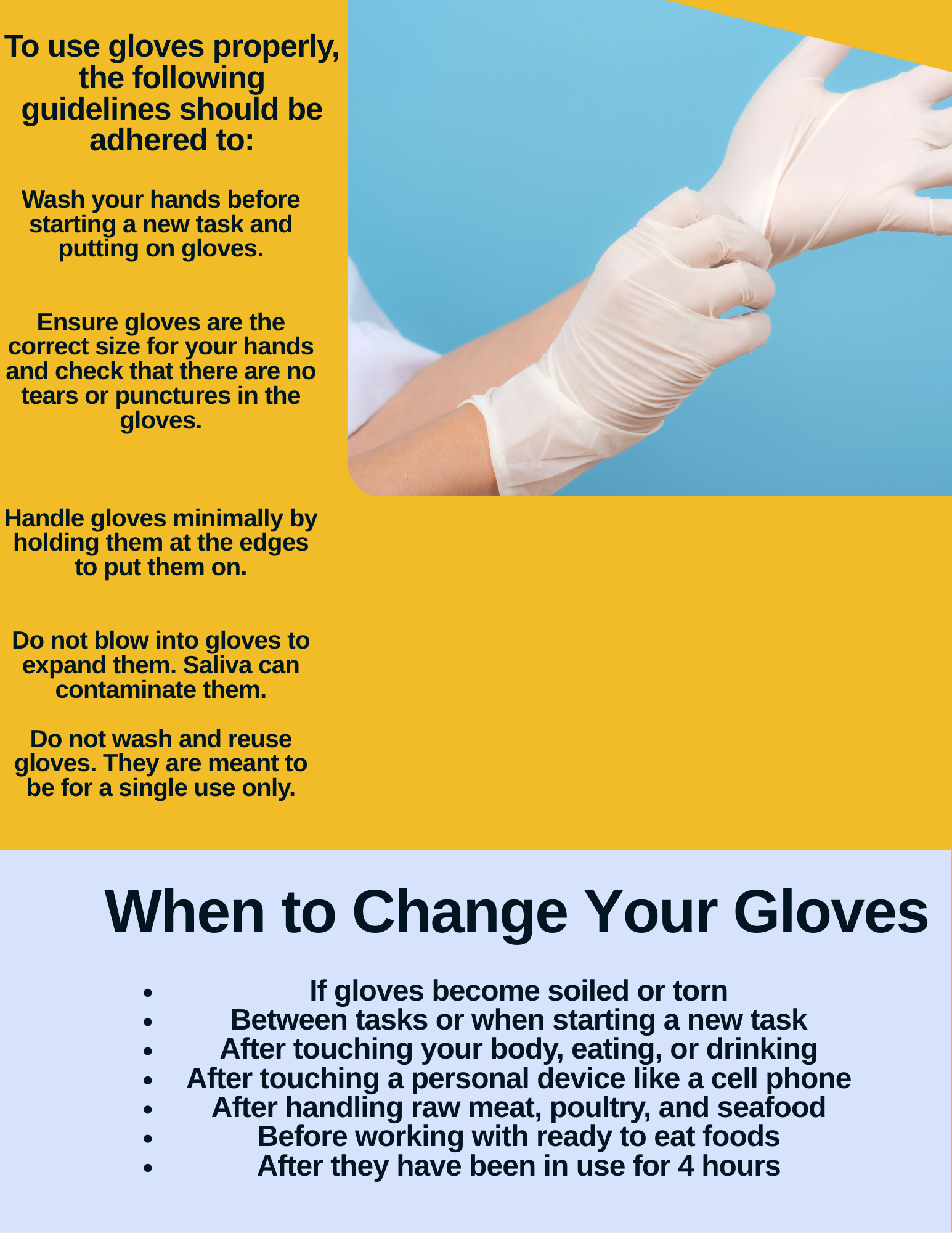22 4.2: Hand Hygiene
4.2 Hand Hygiene
Good hand hygiene is the single most important tool in the hygiene arsenal. Pathogens unable to be seen with the naked eye can easily be spread to food unknowingly by a food employee. Staphylococcus aureus (staph) is a bacterium commonly found on the skin and in the nose of about 30% of individuals. Most of the time staph does not cause any harm, but it can sometimes cause infections.Proper handwashing is the greatest line of defense food employees have to minimize these risks. In order to make handwashing effective there are strict standards that must be followed.
The food employee must know:
When to wash hands
Where to wash hands
How to wash hands
Hand care & maintenance
The proper use of hand sanitizers
When bare hand contact with food is acceptable and not acceptable
How to use gloves and other barriers
When to wash hands
During a normal work day, the food employee will be involved in many tasks, be in different parts of the operation, and will come into contact with guests and coworker. Knowing when to wash hands is key in preventing the spread of pathogens and contaminants. The chart below outlines when a food employee should wash their hands.

Where to wash hands
Hands should be washed at a sink that is used only for the purpose of handwashing. Handwashing should never be done at a food prep sink, a utility sink, or dishwashing sink. It is important that the handwashing sink is in good working order and is stocked with needed supplies to be the most effective.

How to wash hands
Once the food employee is sure that they are at the right sink and have the necessary supplies to properly wash hands, now it is time to make sure that they are following the procedure to wash your hands effectively. The graphic below outlines the steps for washing your hands.

Hand Care
Hands need additional attention to ensure that food employees do not spread pathogens to food. The graphic below shows some additional considerations to promote hand health.

Hand Sanitizers
Hand sanitizers are liquids or gels that help reduce the number of pathogens found on skin. These are effective in conjunction with proper handwashing. Hand sanitizers are not a substitute for handwashing.Handwashing removes physical, chemical, and biological contaminants. It is also important that the sanitizer meet the specific standards outlined in the FDA food code.
Bare hand contact
Foods that don’t require any further washing, prepping, or cooking before consumption are considered ready-to-eat foods. A birthday cake, a deli sandwich, and salad toppings are all examples of ready to eat foods. Because there’s no further cooking it is important that hands don’t contaminate food before it is served. When handling ready to eat foods, the food employee should use a barrier. Barriers include items like deli paper or food-grade utensils like serving spoons, dishers, or tongs. Bare hand contact with ready to eat foods is prohibited. The most common way the food employee can avoid bare hand contact with food is through the use of a disposable single use glove. Foods that do not require cooking that are used as ingredients to dishes that are made with temperature controlled for safety foods will be cooked to the proper minimum temperature and can be handled with bare hands because the cooking process will make those foods safe to eat.
In the first picture, the food employee is manipulating the greens of a salad with his or her bare hands. This is not permissible because the salad will receive no cooking before being brought to the guest. There is a high possibility of contamination from the bare hand contact. The second picture shows that the food employee has on single use gloves to apply garnish to the dish. This is a best practice to reduce the risk of contamination.

Gloves
The barrier most commonly used in food operations to keep food safe from hand contamination are single use gloves. The person in charge should make sure that gloves are readily available in a variety of sizes to accommodate all food employees. Only gloves approved for use in foodservice operations should be used. In addition to multiple sizes, the management should consider having a non-latex glove option due to the possibility of some food employees having an allergy to latex.
There are guidelines and considerations for using gloves effectively. It is still possible to contaminate food if gloves are not worn properly and are not changed routinely. The chart below shows how to use gloves and when to change them.

